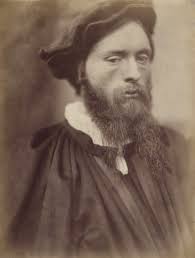William Morris was an English artist, poet, and writer. He was also known to be a socialist. His interests in furniture, wallpapers, stained glass, and their designing led to the Art and Crafts Movement in England. He is said to have revolutionized the Victorian taste in styles and designs.
William Morris Biography
He was born on 24th of March, 1834 to a wealthy family in Walthamstow, England. He went to Marlborough College and then to Exeter at the University of Oxford to pursue arts.

His visit to France and the study of the fifteenth-century medieval architecture and Gothic Styles and revival developed his love medieval art. At a young age, he visited the cathedrals of Amiens, Chartres, and Rouen.
He witnessed paintings of Hans Memling and Hubert Van Eyck which made him appreciate the styles even more. His first and very appreciated work – “The Defence of Guevenere and Other Poems” came to published by the Oxford and Cambridge Magazine.

He became close friends with Burne Jones, a well-known painter, and designer in the days of his youth. He was always very appreciative of John Ruskin and his critics, particularly – The Stones of Venice. He married Jane Burden, a beautiful daughter of an Oxford groom. However, the marriage was not known to be a delightful one.

He was absolutely fond of medieval art and culture and soon came up with a studio in Red Lion Square at London along with Marshall and Faulkner. The company was then known – Morris, Marshall, Faulkner & Company.
Life of William Morris
The other members of this firm were Dante Rossetti, Burne Jones, Philip Webb, and Ford Madox Brown. This was a firm where they built and exhibited beautiful medieval furniture, wallpapers, and stained glass windows. The name flourished across London and then slowly across the whole of England.

The Earthly Paradise
“The Earthly Paradise”, a book that came out in several volumes was written by him in 1870. His companies beautiful and artistic stained glass, furniture and wallpapers were exhibited at the International Exhibition at 1862 in South Kensington.

As their brand flourished across the country, they started receiving contracts of designing churches and renovating palaces. Morris along with Philip Webb, the architect together painted the ceilings of the Jesus College Chapel, Cambridge.
William Morris Family
He had two daughters – Jenny and May born in 1861 and 1862 respectively. In 1865, he suffered an attack of rheumatic fever and therefore moved the business to Bloomsbury, London.

He wrote a romantic novel called “Life and Death of Jason” in 1867. In 1871, he took a joint lease of the Elizabethan manor house of Kelmscott, Oxfordshire. In 1877, he delivered his first public lecture on the “Decorative Arts” followed by “Hopes and Fears of Arts” in 1882.

He was the founder of “Society for the protection of Ancient Buildings” which he formed in order to avoid over renovations of old churches and palaces.
The Kelmscott Press
In 1891, William Morris bought a cottage next to the Kelmscott House in Hammersmith, London. He started three printing presses at this cottage and called it the Kelmscott Press.
The Kelmscott Press was therefore started in 1891. The printer and typographic adviser was Emery Walker. In a span of 7 years the press produced 53 titles in 66 volumes which were a huge number for an 18th-century press.

As Morris was always into Gothic style and medieval art, this type style was Golden based on Nicholas Jenson, a fifteenth-century French Printer. The font used was Gothic called “Troy” based on fifteenth-century German printers. “The Works of Geoffrey Chaucer” was a well-known novel printed by Kelmscott Publications.

The Kelmscott Press was the like the last chapter in the project of preserving Medieval English Literature undertaken by William Morris. He was keen on preserving the relationship between an artist and his art.
William was long interested in binding books and putting the words of medieval writers such as Caxton out there. He printed these in over 18000 volumes. He collected the manuscripts and produced beautiful editions of his own. That was his way of paying them tribute.

He also printed works of renowned writers like Shelley, Keats, Rossetti, Tennyson and some more. The books produced at the Kelmscott Press were expensive since he used his owned handmade paper and beautiful ideas for customization.
William Morris put in a lot of hard work in even determining the colors and paper type for every book. These books were meant to be read slowly, handled gently, appreciated and treasured as they are even today.